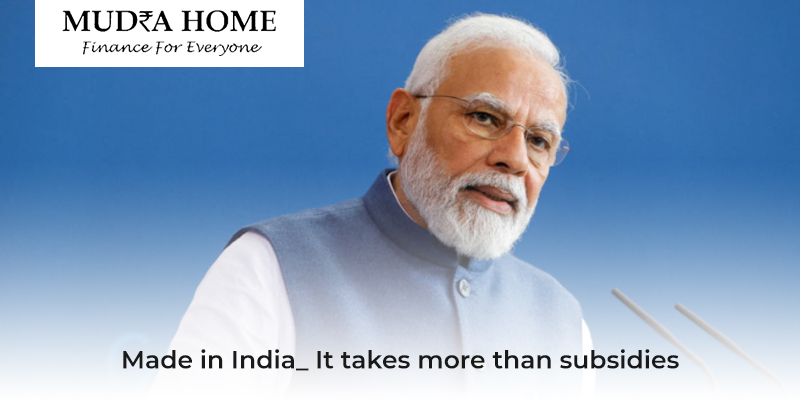
Last week, when inaugurating a new aircraft factory in western India, Prime Minister Narendra Modi resorted to a slogan he coined just months after taking office in 2014: “Make in India.” This time, however, he added: “Do it for the world.”
This is not the first time Modi has pointed out that India needs to increase its manufacturing exports. Still, the focus on rhetoric is welcome, as India’s investor proposition has generally focused on the size of its domestic market rather than how easy it is to enter and export from the country.
That’s partly because it’s still not as easy as it should be. The factory that Modi inaugurated will produce Airbus SE’s C-295 military transporter in collaboration with Tata Group. While India has promised to buy 40 aircraft, no export deal has been announced. The government’s boast that most of the plane’s supply chain would be in India (highlighted by Tata Sons Ltd. Chairman Natarajan Chandrasekaran’s claim that the company was “taking aluminum ingots at one end of the value stream and turning them into an Airbus”) shows that Indian politicians still do not understand the nature of modern, decentralized supply chains.
Indeed, the controversies surrounding the Tata-Airbus deal, and in particular its location in Modi’s home state of Gujarat, indicate that India’s recent plans to become a manufacturing superpower may be in trouble.
India does not have a real industrial policy as such. Instead, what you have are various government programs costing around Rs 2 trillion for ‘Production Linked Incentives’ (PLI). These are effectively subsidies or special treatment for large investments in certain sectors, 14 of them recently.
Some of these target sectors have obvious strategic value, including semiconductors, solar panels, mobile phones, and batteries. Others were clearly chosen because they will employ many people, such as textiles. Some are simply areas where India has historically performed well, such as B. Automotive components. Given this confusing prioritization, it is not surprising that many other sectors are also pushing for funding.
There is not a manufacturing investor in the world who would turn down a government grant. But industrial policy should be more; its objective is to clarify and consolidate government priorities. Companies are expected to be able to read an industrial policy and trust that the government will have a strong commitment to a sector.
PLI programs do not quite achieve this. For example, one of the sectors targeted by the stimulus was specialty steel. Government support for successful steelmakers went hand in hand with integrated production and export objectives. However, a few months after the targets were set, the same government unexpectedly introduced an export tax on the same steel products. After so much confusion, it’s hard to sell PLI as a sign of government commitment.
The other reason that PLIs work to some degree is that companies expect grants to significantly reduce the risks of investing in a specific sector. It is common for foreign investors in India to do business with a local partner; Surely a government that says it will inject millions into your factory is the best partner of all? Once the union government is involved in a particular project, some of the obstacles to doing business in India – nosy bureaucrats, political whims, cumbersome regulators – could be removed.
What we have seen, however, is that the government is not exactly a silent partner. Until recently, most observers were under the impression that the Tata/Airbus project would be based in Maharashtra. The news that he was going to Gujarat instead gave rise to a political dispute. A former minister of state claimed that the companies had told local authorities they had no choice but to locate: the location would be in the Modi government.
The temper in both states was bad, in part because it came so soon after Maharashtra lost another even bigger PLI project, an ambitious chip factory built by Foxconn and Vedanta, to Gujarat. Here, too, the preferences of the Union government, which has provided up to $10 billion in subsidies for semiconductors, may have been decisive.
Modi has often spoken of “cooperative competitive federalism,” the idea that Indian states would freely compete for investors while raising each other’s standards. However, when it comes to the PLI selection, New Delhi seems to have the go-ahead.
A real commitment to export-led manufacturing growth would require greater investor confidence. The government should spend less on subsidies, but ensure investors have freedom of choice over where and how to operate. The PLI program could bring to India one or two success stories, for example in mobile phones. But unless this is accompanied by a government rethink, it will not make India the next China.